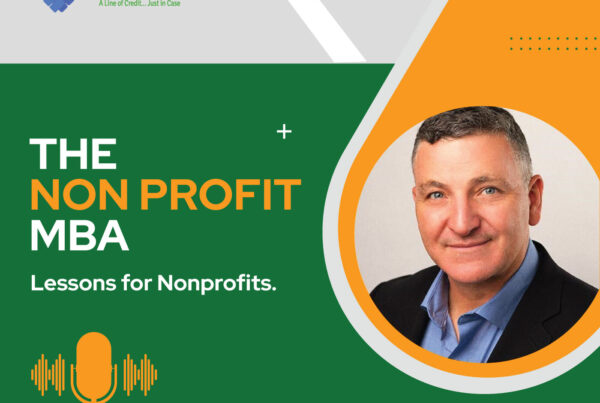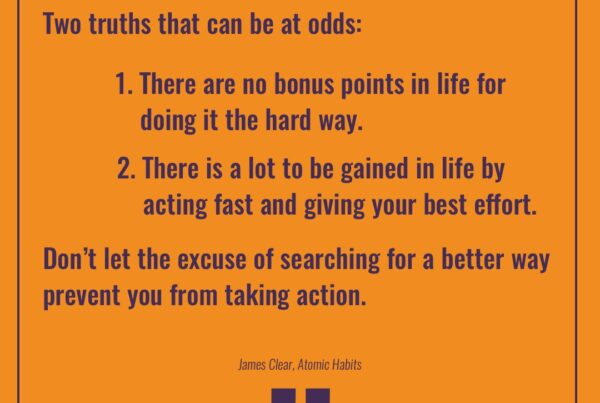This week I’ve got a special step-by-step guest post to help you plan your fundraising auction — by Joshua Meyer, Director of Marketing at OneCause

If you’re looking for an engaging fundraising activity, a charity auction is one of your best choices. Not only do auctions raise a ton of money for your nonprofit’s mission, but they also provide a night (or more) of entertainment and fun for your audience.
Planning a fundraising auction is a big undertaking, so it’s important to be prepared and understand exactly what will be required of you. Our auction experts at OneCause have created this quick step-by-step resource to help guide your way. To pull off a successful auction from beginning to end, make sure that you follow these key steps:
- Recruit an event team and determine roles.
- Consider your event software toolkit and needs.
- Set your budget and fundraising goals.
- Procure items and set starting bids.
- Determine and plan for your event location.
- Invite supporters and market your auction.
- Execute your auction event.
- Follow-up and thank supporters.
Note: Before you can get started with the rest of these critical event-planning steps, it’s important to determine the type of auction you’d like to host. Over the past year, virtual and hybrid events have become the norm.
While the core planning steps are generally consistent regardless of the type of auction you choose, if you’d like to take advantage of these remote-friendly approaches, it’s critical that you adapt for the specific format, plans, and audiences beforehand. This will almost certainly mean investing in new tools and putting even more strategy than usual into your marketing efforts. Let’s jump in!
1. Recruit an Event Team & Determine Roles
The first step when planning any event is to gather and prepare the team that will help you run it. Though your event team specifics will likely vary based on the type of auction you choose (i.e., in-person, virtual, or hybrid), consider the following crucial event roles when building your team:
- Event coordinator
- Procurement team
- Event ambassadors
- Venue set-up and tear-down
- Ticket sales and check-in/-out
- Tech team
- Emcee(s) and auctioneers
Your event team will likely consist of both staff and volunteers, so volunteer recruitment will be critical early on in the planning process. Consider reaching out to previous event volunteers, donors, and other supporters to begin building your event team. As you recruit volunteers and staff to support your efforts, be sure to pair individuals with responsibilities that closely align with their interests and skills.
Then, once you have your team ready, you can get a jumpstart on the following tasks.
2. Consider Your Event Software Toolkit & Needs
If you’ve hosted a fundraising auction in the past, you might already have a majority of the tools you need for a successful event. However, it’s always important to take a look at your existing software toolkit and compare what you have with what you need to avoid any unexpected holes in your strategy.
For an optimized fundraising auction, be sure to prioritize the following types of solutions:
- Mobile and online bidding
- Auction item catalog creation
- Event ticketing and registration
- Payment processing
- CRM or donor database
- Marketing and outreach
This OneCause guide to silent auction software suggests choosing a solution that is cloud-based, virtual-friendly, nonprofit-specific, and scalable for the best results. Plus, it’s a good idea to prioritize a single comprehensive platform over a number of piecemeal solutions strung together if you want to ensure a positive, seamless experience for both your team and your attendees.
3. Set Your Budget & Fundraising Goals
Setting clear goals before your auction can help you determine whether your event was a success when it’s over. We suggest keeping the SMART goal framework in mind as you craft your fundraising objectives—meaning that your goals should be specific, measurable, attainable, relevant, and time-bound.
Most fundraising events target multiple engagement and revenue goals. For example, you might aim to:
- Collect $X in fundraising revenue
- Secure X number of new donors
- Procure X in-kind donations for auction items
- Retain X% of online attendees throughout the event
Then comes the question of how much you can actually spend to pull off your upcoming auction. You want your revenue to exceed your expenses to generate a positive return on investment (or ROI). To do so, consider factors like procurement costs, ticketing and pricing strategies, logistical costs, and more.
4. Procure Items & Set Starting Bids
The items up for bid at your auction are the star of the show, so it’s vital that you invest the necessary time and energy into this step. When you solicit donations from local businesses and other corporate sponsors, you can procure high-demand items for well below their value and keep your event ROI high.
Some of the most classic auction items include:
- Travel packages
- Exclusive experiences
- Signed memorabilia
- Gift baskets
But don’t be afraid to get creative! Your item catalog should ideally cover a range of price points and appeal to your unique audience’s interests.
Then, once you’ve acquired the items you need, it’s important to choose your starting bids and minimum increases strategically. According to our OneCause resource on how to price auction items, minimum bids should be set at between 30 and 50% of the item’s FMV (or fair market value). Then, make sure to choose bidding increments of 10-15% of the FMV.
5. Determine & Plan For Your Event Location
One of the biggest logistical decisions you’ll make while planning your auction is its location. However, this can look very different depending on the type of auction you’re hosting:
- For in-person auctions, you’ll need to choose a venue to house your fundraising event. It should be local and large enough to accommodate your expected guests, staff, and entertainment.
- For virtual events, consider an online platform that includes both auction tools and virtual event tools for the best results and most seamless donor experience. Virtual attendees will be participating in your auction directly through this platform, so make sure it’s user-friendly and engaging.
- For hybrid auctions, you’ll need both a physical venue and an online platform. Since a hybrid event will typically have a lower in-person turnout, this can likely be a smaller space than a traditional in-person auction.
Your event venue will likely be one of your largest overhead expenses, so taking the time to consider your options ahead of time is critical. Then, you’ll need to account for other related elements such as your decorations, catering, set-up, entertainment, and more.
6. Invite Supporters & Market Your Auction
The next step in auction planning is to market your upcoming event—and that requires strategic communication with your audience. Consider the following best practices for auction marketing:
- Personally invite key supporters. Major donors, consistent event attendees, and other significant supporters deserve personalized invitations to your auction. They’ll feel like a critical part of the event and be more likely to attend and to contribute.
- Leverage mass marketing to the general public. Engaging events like charity auctions can be a great way to reach out to first-time supporters as well. Make sure to take advantage of mass outreach using your online presence and encouraging existing supporters to invite their friends and family.
- Incorporate peer-to-peer or ambassador marketing strategies. A peer-to-peer or ambassador fundraising approach is an extremely effective way to spread the word about your upcoming event and begin raising revenue beforehand. Encourage event attendees and other supporters to invite their own friends and family.
- Drive registrations with email, social media, and other digital tactics. Spread the word about your upcoming auction using all sorts of virtual promotional strategies. Always be sure to send users to your online registration form with strategic calls to action.
You don’t want to invest significant time and money into planning your fundraising auction just for your results to fall short because you forgot to promote it to your supporters. Instead, begin promoting your event several months in advance to increase excitement and get your donors ready to bid.
7. Execute Your Auction Event
Now, the time has come and your auction has arrived. If you’ve put in the work beforehand to set your auction up for success, this step should be simple—but you can’t just sit back and watch, either.
Consider the following tasks to keep energy high and ensure your auction runs smoothly from start to finish:
- Get (and keep) your audience engaged. Especially for virtual and hybrid events, keeping your audience’s attention throughout the event is critical. Make sure your software incorporates real-time outbid notifications to keep participants coming back to your event platform time and again.
- Drive bids high. Gamification tactics are one of the best ways to encourage bid wars and incite friendly competition among participants. For example, leverage real-time leaderboards displaying top donors and item countdowns leading up to bid closes to get more guests bidding higher in no time.
- Ensure a simple check-out process for winners. Once bidding closes, make sure you’ve streamlined the check-out process so that winners can quickly and easily pay and receive their items. Depending on your event type, they might take items home from the venue, or you might have to arrange shipping or drop-off in the following days.
You’ve already put the time, effort, and resources into planning a successful auction. Now, it’s all about effective execution!
8. Follow-up & Thank Supporters
Once your winners have checked out and your guests have gone home, your job isn’t finished. Now it’s time to strategically follow up with attendees, thank them for their participation and support, and ensure your organization leaves a positive final impression for this event. Here are a few suggestions for doing so:
- Ask for feedback. One of the most impactful ways to determine whether your event was a success is by asking attendees directly for their feedback. Consider sending out an online survey to see what guests loved about your event and see where they believe there’s room for improvement.
- Communicate donation impact. Be sure to share how guest contributions will be used to drive your nonprofit mission forward. It’ll make them feel good about the money they’ve already given and encourage them to continue their support.
- Encourage ongoing engagement. Share easy ways for attendees to stay involved with your organization, whether that’s by checking out your social media, signing up for a regular newsletter, or registering for your next event.
And as always, remember to say thank you to auction attendees for their support. This final step in the process is crucial for building and maintaining personal relationships with supporters and showing that you see them as more than just another data point in your CRM—or worse, an ATM.
Whether you’re planning your first-ever fundraising auction for your organization or you’re simply looking to improve your team’s existing strategies, it’s important to have a solid foundation of knowledge to guide your way.
When done well, a charity auction will raise a ton of revenue for your nonprofit, build stronger relationships with event attendees and other supporters, and offer unique and tangible benefits for guests to give. Good luck!
About Our Guest Writer
 Joshua Meyer brings over 14 years of fundraising, volunteer management, and marketing experience to his current role as the Director of Marketing for OneCause. Currently, as a member of the OneCause sales and marketing team, Josh manages all of the firm’s marketing efforts. He has a passion for helping to create positive change and loves that his current role allows him to help nonprofits engage new donors and achieve their fundraising goals.
Joshua Meyer brings over 14 years of fundraising, volunteer management, and marketing experience to his current role as the Director of Marketing for OneCause. Currently, as a member of the OneCause sales and marketing team, Josh manages all of the firm’s marketing efforts. He has a passion for helping to create positive change and loves that his current role allows him to help nonprofits engage new donors and achieve their fundraising goals.






